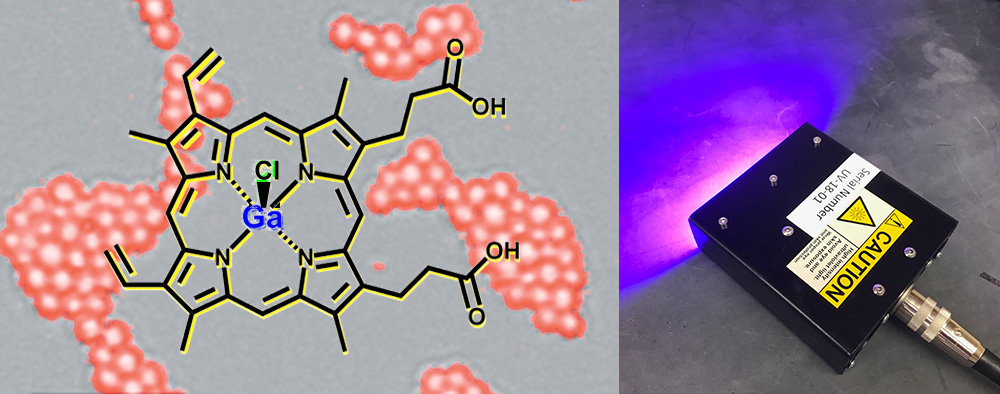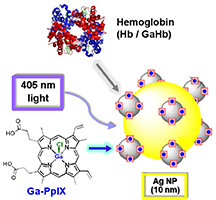Molecular Conjugates for Pathogen Targeting
Bacterial infections continue to be a major public health concern, made worse by the rise of multidrug-resistant strains. Many bacteria bind to cell-surface carbohydrates (glycan recognition) in order to infect host cells, or express iron-harvesting systems (siderophore and hemin recognition) to maintain virulence. We have designed molecular conjugates that exploit such immutable recognition pathways, with application toward pathogen detection and targeted delivery of antimicrobial agent by Trojan-horse strategies.
We have found that select bacteria (including Staphylococcus aureus and Bacillus anthracis) can acquire hemin with remarkable speed due to their expression of cell-surface hemin receptors. This has led to our development of photoactive hemin analogs that can kill drug-resistant strains of S. aureus at nanomolar concentrations using visible light, with further increases in potency when mounted on Ag nanoparticles. MRSA can be inactivated within seconds using an LED source or within minutes by a simple compact fluorescent lightbulb, providing us opportunities to develop targeted antibacterial therapies in resource-limited conditions.
Immutable ligands can also be used to support label-free, fault-tolerant platforms for pathogen detection, based on the patterned adhesion of cognate bacteria. Glycans, siderophores, and hemin printed into periodic arrays support the rapid capture of bacteria at low densities. Positive identification is made by the emergence of optical patterns under darkfield conditions, with conversion into frequency signals by Fourier transform. This approach enables the presence of bacteria to be detected within minutes, whose identities are encoded by their specific affinities for the patterned ligands.

Siderophores, glycans, and hemin derivatives as immutable ligands for pathogen targeting and capture. Right, rapid bacterial adhesion onto ligand microarrays for label-free pathogen detection.

